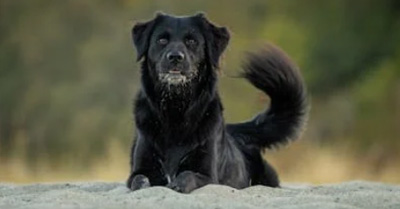Double Genitive (a friend of John’s) | (A-Level, Basic)
The Double Genitive
In English, there are several ways to express possession or association.
Using an apostrophe and “s” indicates that someone owns or has something. It also shows an association between people or things.

Sharon Snider | Pexels
- The dog’s tail is black. (The tail is associated with the dog. It is part of the dog.)
- John’s book is on the table. (John owns the book. It’s his book.)
- Mary’s sister is visiting. (Mary and her sister are related.)
The preposition “of" is also used, particularly for relationships or associations.
- The tail of the dog is black.
- The leg of the table is broken.
- The roof of the house is red.
The double possessive combines both
- ”of" and a noun with an apostrophe and “s” (a friend of John’s) or
- ”of” and a possessive pronoun (a friend of his).

Helena Lopes | Pexels
Examples comparing possessives
1. Compare:
- Mark is Mary’s friend. (using ’s)
- Mark is a friend of Mary’s. (double possessive)
- Mark is a friend of hers. (double possessive)
In Sentence 1, the focus is on one friend (Mark). The double genitive in Sentences 2 and 3 express the idea that Mary may have many friends, and Mark is one of them.
2. Compare:
- My student is learning English very fast. (possessive determiner)
- A student of mine is learning English very fast. (double possessive)
In Sentence 1, you are talking about a student. Using the double genitive in Sentence 2, you express the idea that, among all your students, one of them is learning fast.
3. Compare:
- Jane’s idea is to start working on the project next week. (possessive determiner)
- An idea of Jane’s is to start working on the project next week. (double possessive)
In Sentence 1, the focus is the one idea that Jane has. The double genitive in Sentence 2 expresses that one of Jane’s ideas is to start next week, so she may have other ideas.
Attention!
In one situation, the double genitive and possession with the preposition “of” can make a big difference in meaning.
“A photo of John’s” means the photo belongs to John.
”A photo of John” means it is a photo of his face. The photo may belong to him or someone else.
Very often, there is only a small difference between the double genitive and other possessive constructions. If you use one or the other, people will understand it just fine, especially because the situation or context clarifies the meaning.
Be careful not to express the wrong idea. The following sentences express the sense that the speaker is annoyed or irritated by someone’s wife or ideas:
That wife of his is here again.
What do you think about those ideas of his?
I don’t like this plan of yours.
Practice
Practice 1. Fill in the blanks using double genitives.
Related Lesson
Possessive determiners: my, your, his, her, its, our, their.
Possessive pronouns: mine, yours, his, hers, its, ours, theirs.
Congratulations on completing this lesson!

Thanks to our supporters!
This material has been made possible by supporters like you. Learn how you can support us.

“What should I learn next?”
Use the navigation buttons to choose another topic or lesson.
Thank you for Supporting Snap Language
Snap Language supporters make the creation of these materials possible.
Learn how you can support our work, get perks, and help us continue creating high-quality materials.
You can support us by simply white-listing this site.